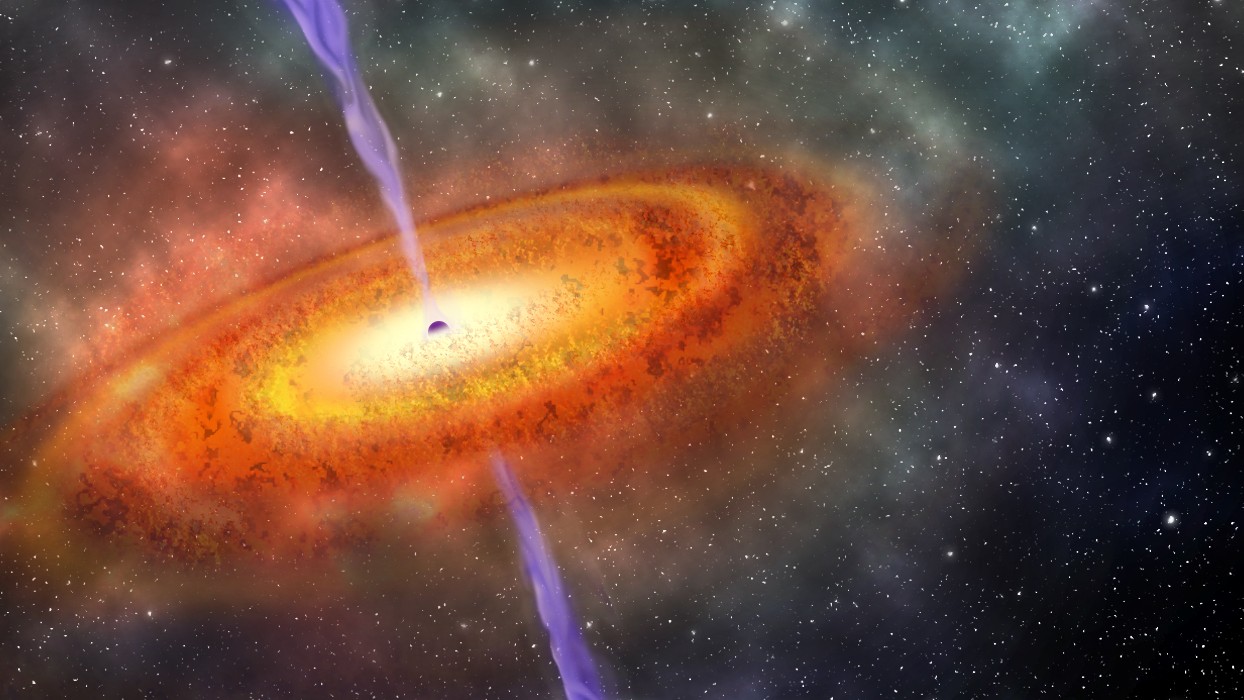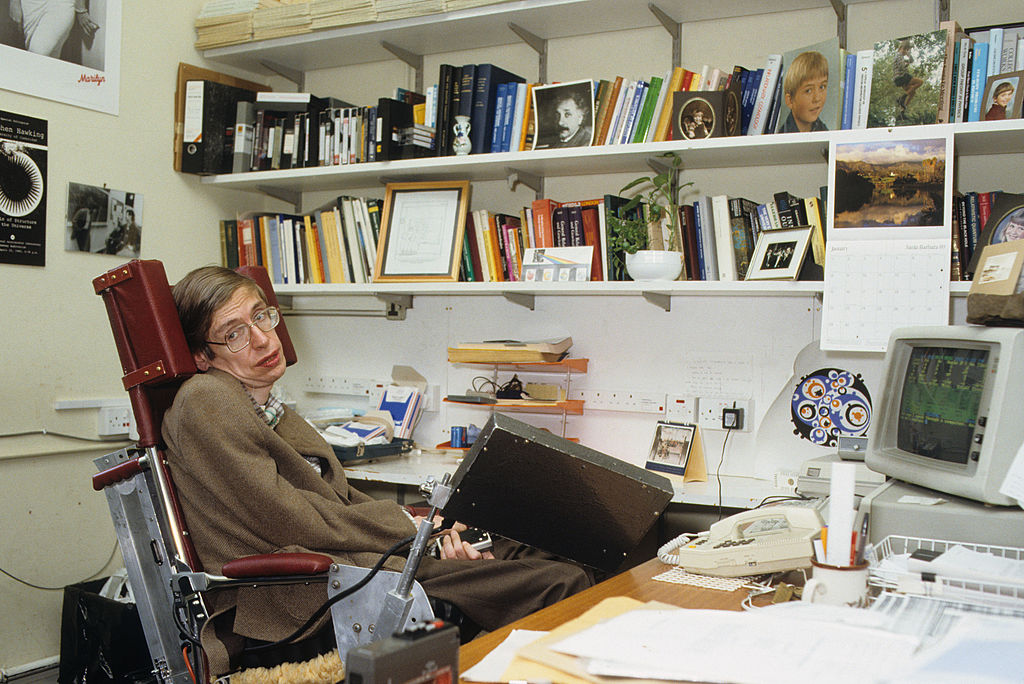
One of physicist Stephen Hawking's most famous paradoxes may finally be solved: Black holes may in fact hang onto information about the massive stars that created them, new research indicates.
This information may lurk in the radiation around black holes – colloquially known as “quantum hair” – and could, in theory, be retrieved to retell the origins of those black holes, the research suggests.
These findings, published March 6 in the journal Physics Letters B., may finally resolve a thorny problem that Hawking was working on in his last years.
Related: Stephen Hawking's final book says there's 'no possibility' of God in our universe
According to Hawking's work, radiation slowly “leaks” out of black holes in the form of thermal energy, which has come to be known as “Hawking radiation.” But because of its thermal nature, this radiation can’t carry information. That means that as black holes evaporate, they methodically destroy all information about the stars that created them. This is contrary to the laws of quantum mechanics, which say that information cannot be destroyed and that an object’s final state can reveal clues about its initial state. This problem has troubled cosmologists for decades and is known as the “Hawking information paradox.”
“[This research] is the final nail in the coffin for the paradox because we now understand the exact physical phenomenon by which information escapes a decaying black hole,” lead study author Xavier Calmet, a professor of physics at the University of Sussex, told Live Science via email. He suggests a modification to Hawking radiation that makes it “non-thermal” and thus capable of carrying information with it away from the final fate of the black hole.

The black hole problem
Black holes are objects so massive that nothing can escape the pull of their gravity, not even light. They form when enormous stars run out of fuel and collapse in on themselves.
In classical physics, black holes are “very simple objects,” Calmet said. “So simple that they can be characterized by three numbers: their mass, angular momentum, and electric charge.”
Famous physicist John Wheeler described this lack of distinguishing characteristics by saying “black holes have no hair.” But, Calmet explained, while the final black hole is very simple, the original star that birthed it is a complex astrophysical object, consisting of a complicated amalgam of protons, electrons, and neutrons which come together to form the elements that build the chemical composition of that star.
While black holes carry no “memory” of the stars they once were, the rules of quantum physics say that information can’t simply be erased from the universe. In 1976, Hawking introduced a fly to this cosmic ointment by showing this information couldn’t dwell indefinitely within black holes sealed away from the outside universe either. Applying the rules of quantum mechanics to black holes, Hawking suggested they emit a type of thermal radiation, later called Hawking radiation. Over immense periods of time, the leaking of this radiation causes black holes to completely evaporate, leaving only a vacuum behind. In this way, information is irretrievably lost.
“This is however not allowed by quantum physics, which posits that the movie of this black hole’s ‘life’ could be rewound,” Calmet said. “Starting from the radiation we should be able to rebuild the original black hole and then eventually the star.”
Finding the black hole's 'hair'
Along with his colleague Steve Hsu, a professor of theoretical physics at Michigan State University, Calmet has been working since 2021 to crack Hawking’s paradox. In a previous study, published in March 2022, the team argued that black holes do indeed have “quantum hair,” in the form of a unique quantum imprint in the gravitational fields that surround them
In their new research, the team reassessed Hawking’s 1976 calculations, but this time accounted for the effects of “quantum gravity” — the description of gravity according to the principles of quantum mechanics — something Hawking hadn’t done.
“While these quantum gravitational corrections are minuscule, they are crucial for black hole evaporation,” Calmet said. “We were able to show that these effects modify Hawking radiation in such a way that this radiation becomes non-thermal. In other words, factoring in quantum gravity the radiation can contain information.”
While the quantum hair suggested in Calmetand Hsu’s previous work was an abstract mathematical concept, the team has now identified the exact physical phenomenon by which information escapes the black hole via Hawking radiation, and how it could be retrieved by an outside observer. This is currently not possible, as it would require an instrument sensitive enough to measure Hawking radiation, which currently is purely theoretical.
Currently there is no real way for astrophysicists to measure the effect the researchers propose, as it is minuscule, Calmet acknowledged. Instead, he suggests one way to progress this theory would be by studying simulations of black holes in labs on Earth. The team’s mathematical modeling of Hawking radiation and black holes could prove invaluable in these simulations.







